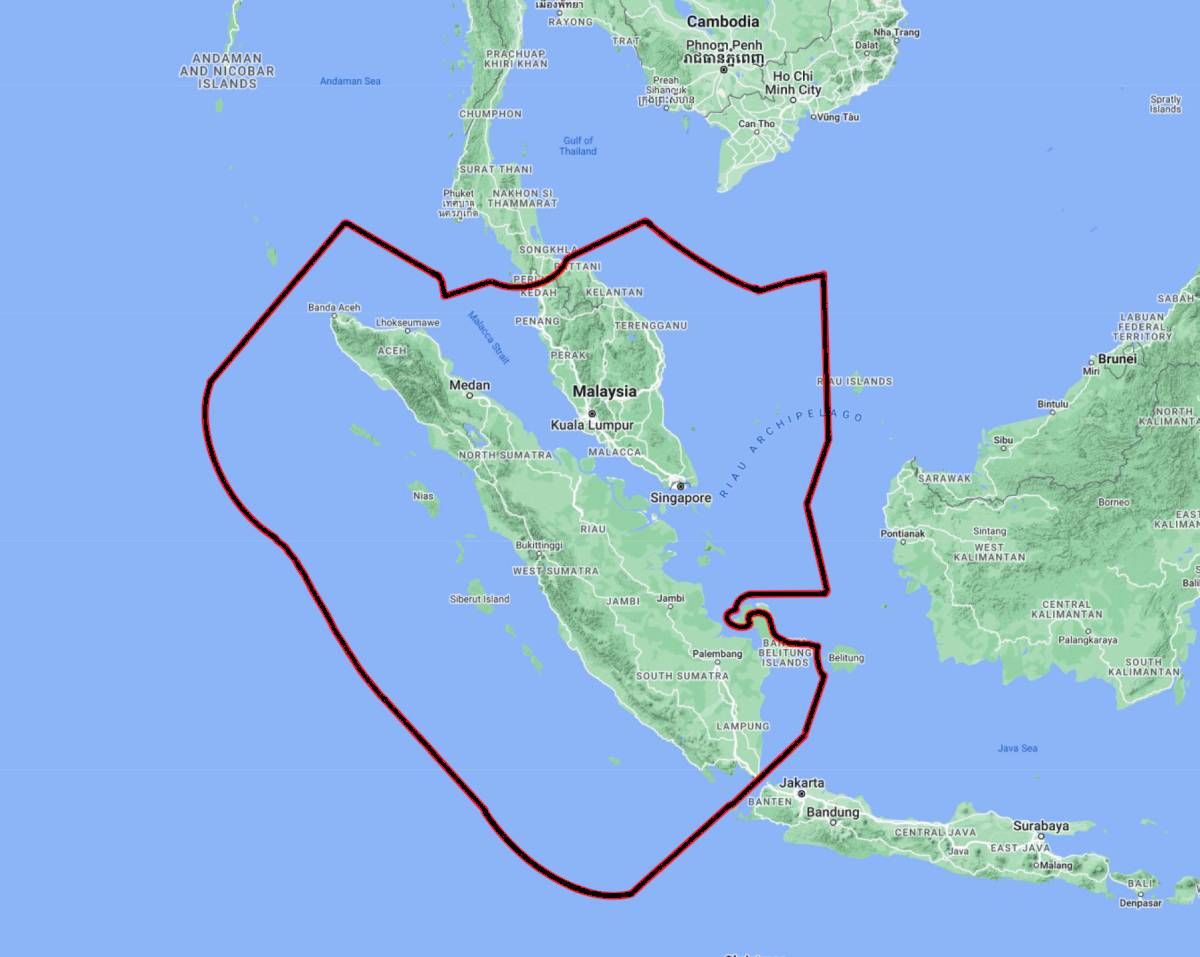Malayan tapirs: how long noses restore and protect ecosystems
One Earth’s “Species of the Week” series highlights the flagship species of each of the 844 unique ecoregions contained within Earth’s bioregions.
With a body resembling a giant pig and an elongated snout similar to an elephant’s trunk, tapirs are one of the most peculiar species on our planet. Malayan tapirs (Tapirus indicus) are the largest of the four tapir species, using their specialized noses for eating and pruning the thick vegetation found throughout the islands of Southeast Asia.

Malayan tapirs are the flagship species of the Peninsular Malaysian Rainforests ecoregion, located in the Peninsular Malaysian & Sumatran Tropical Rainforests bioregion (IM18).
Camouflage for sleep
Locally, the Malayan tapir is called the badak throughout Indonesia and Malaysia, and the som-set in Thailand. As a nickname, it is often referred to as the “Oreo tapir” because of its distinct black-and-white pattern resembling the famous cookie.
This unique coloration consists of a black front body, white middle body, and black hind legs, making the Malayan tapir’s outline more difficult to recognize by predators. Perhaps the most passive and ingenious camouflage, other animals, therefore, mistake the tapir for a large rock while it is sleeping.
Standing up to over a meter tall (3.2 ft), Malayan tapirs measure between 1.8-2.4 meters (6-8 ft) long and can weigh up to 320 kilograms (704 lb). Females are larger and are thought to have a more expansive home range than males, over two square kilometers.
A solo life
Solitary creatures, Malayan tapirs mark their territories by spraying urine on distinct paths carved out through the jungle undergrowth. The species is only seen together during the breeding season from April to June, using high-pitched squeaks and whistles to communicate.
Females typically bare one calf every two years after a gestation period of around 395 days. Calves weigh about 6.8 kilograms (15 lb) at birth and have a unique coat of brown hair with white stripes and spots. This pattern enables the calves to hide effectively in the light streaming through the leaves of the forest, but fades between four and seven months after birth.
%20dreamstime_xxl_87269269-2.jpeg)
The power of the proboscis
The long, flexible trunk, or proboscis, of the Malayan tapir helps guide them through the jungle with smell as their sense of vision is extremely poor. Their eyes are covered in a blue haze called corneal cloudiness caused by exposure to light.
Malayan tapirs also use their proboscis as a snorkel as they spend much of their time in water, bathing and swimming. Their sturdy hooves help them climb steep river banks and forest slopes.
Yet, the most important use of their trunk is for feeding, pulling and plucking plants into their mouths. Malayan tapirs eat more than 115 species of leaves, shoots, and fruit. With their pruning of the forest and seeds found in their droppings, tapirs act as gardeners of their ecosystem, helping more saplings and blossoms grow.
Ecosystem rebuilders
Studies have found that tapirs could be key in helping degraded rainforests bounce back with this role in their ecosystem. Researchers observed tapirs spread three times more seeds in deforested regions than in healthy environments, making rewilding tapirs a natural solution to fight climate change and rebuild habitats.
However, the biggest threat to Malayan tapirs is the loss of their habitat due to land clearance for human settlement, agriculture like palm-oil plantations, and logging. They are classified as endangered in conservation status, with less than 2,500 mature individuals in the wild.
The best way to recover the species and their home would be to reclaim and protect the deforested areas and allow the Malayan tapirs to roam freely and reseed with their diet. A unique species indeed with the capability to restore land and biodiversity if given a chance.
Interested in learning more about the species and bioregions of Indomalaya? Use One Earth's interactive Navigator to explore bioregions around the world.
Launch Bioregion Navigator_CC-Bernard%20Dupont-2013_resized.jpg?auto=compress%2Cformat&w=1440)


